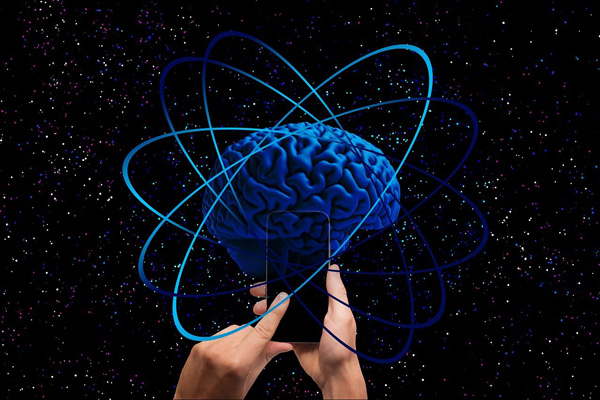Elon Musk claims Neuralink successfully implanted a brain chip in the human

[Controlling a phone mentally. Photo Credit: Pixabay]
Elon Musk, the CEO of Space X, Tesla, and Neuralink, has announced that Neuralink has successfully implanted one of its wireless chips into a human brain.
On January 30, in a post on X, formerly known as Twitter, Musk said, “Enables control of your phone or computer, and through them almost any device, just by thinking.”
Neuralink aims to plant a chip into the brain and make people's lives convenient.
By implanting a coin-sized chip into the brain, Neuralink aims to empower individuals with the ability to perform tasks previously unimaginable.
From conducting research to tackling complex calculations beyond the capabilities of conventional computers, the potential applications are vast.
The implantation process delicately places the chip between the skull, connecting wires directly to the brain, enabling bidirectional communication.
Musk provided updates on the progress of a patient who received the implant, “The progress is good, and the patient seems to have a full recovery, with no after effects,” on February 19 during a Spaces audio conversation on X.
Remarkably, the patient was able to move a mouse on a screen just by thinking, which demonstrated the tangible impact of Neuralink’s innovation.
The public believed the patient would have serious aftereffects, but they were astonished and stunned when the patient didn’t.
This achievement marks a significant milestone in Musk’s vision for Neuralink.
In May of last year, Neuralink said it received approval from the US Food and Drug Administration (FDA) to launch the study.
In September, the company said it would begin recruiting paralyzed participants to test the device called “Telepathy.”
Initial results indicate promising neuron spike detection and showcase the potential for Neuralink to revolutionize the field of neurotechnology.
However, concerns have been raised regarding the potential risks associated with Nerualink’s technology.
Some fear the electromagnetic radiation emitted by the implant could pose health risks, including the development of cancer.
It is essential to acknowledge that advancements in technology often come with unforeseen risks, and strict safety measures must be implemented.
Critics also question the necessity of such technology, arguing that traditional methods of interacting with devices are possible without the need for invasive implants.
Experts have said that Neuralink could be the “Dream” technology for people who have physical disabilities because of accidents or more.
Nevertheless, the emergence of neurotechnology presents an opportunity to redefine the human-technology interface.
This paves the way for enhanced capabilities and unprecedented connectivity.
As neurotechnology continues to evolve, the community needs to discuss its larger purpose, use, and implications.
Neurotechnology can have diverse impacts across society, including the home, the workplace, and infrastructure networks.
Teasing out the issues across these different districts should enable people to foresee the harms and benefits of neurotechnology.
Through thoughtful consideration and informed decision-making, it is crucial to harness the transformative power of neurotechnology to create a future where technology seamlessly supports both humans and the environment.
Neuralink is going a step ahead in achieving that goal.

- Jayden Yeonseop Lee / Grade 8
- Scott Creek Middle School

![THE HERALD STUDENT REPORTERS [US]](/assets/images/logo_student_us.png)
![THE HERALD STUDENT REPORTERS [Canada]](/assets/images/logo_student_ca.png)
